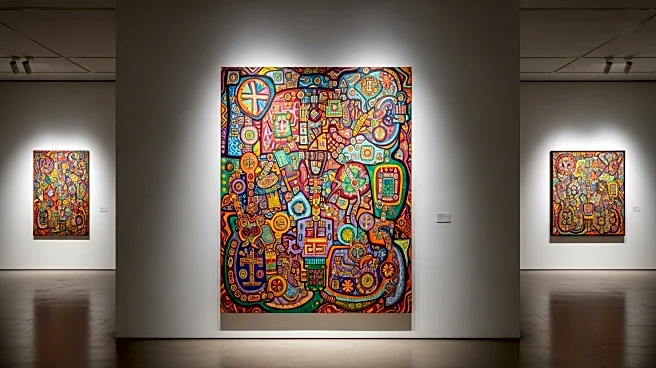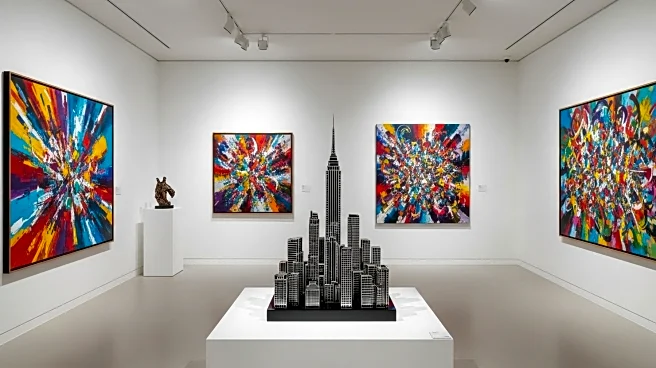What is the story about?
What's Happening?
Minnie Evans, a self-taught African American artist known for her vibrant and mystical landscapes, is experiencing a resurgence in recognition with major exhibitions planned at prominent U.S. museums. Evans, who worked at Airlie Gardens in Wilmington, North Carolina, used her position to create and sell her art, which often featured florals, animals, and abstract motifs. Her work is characterized by its kaleidoscopic and symmetrical nature, incorporating human faces and eyes into landscapes. The Museum of Fine Arts in Boston is currently hosting an exhibition titled 'The Visionary Art of Minnie Evans,' showcasing 16 of her works. This exhibition is a precursor to a larger show, 'The Lost World: The Art of Minnie Evans,' which will open at the High Museum of Art in Atlanta and later travel to the Whitney Museum of American Art in New York. Evans's art, which was initially created using affordable materials, is now gaining institutional attention, potentially leading to increased market activity.
Why It's Important?
The renewed interest in Minnie Evans's work highlights the growing recognition of African American artists and their contributions to the art world. Evans's art, which reflects her spiritual connection to nature and her personal experiences, offers a unique perspective that enriches the cultural landscape. The exhibitions at major museums like the MFA, High Museum, and Whitney Museum signify a broader acceptance and celebration of diverse artistic voices. This resurgence not only honors Evans's legacy but also provides an opportunity for collectors and art enthusiasts to engage with her work, potentially increasing its value in the art market. The institutional focus on Evans's art may inspire further exploration and appreciation of other overlooked artists, contributing to a more inclusive art history narrative.
What's Next?
The upcoming exhibitions at the High Museum and Whitney Museum are expected to further elevate Minnie Evans's profile, attracting new audiences and collectors. The documentary 'Minnie Evans: Draw or Die' will also contribute to her growing recognition, offering insights into her life and artistic journey. As Evans's work gains visibility, there may be increased interest from collectors, leading to more of her pieces appearing at auctions. The institutional attention could spark a reevaluation of her art's significance, potentially influencing future exhibitions and scholarly research. The resurgence of interest in Evans's work may also encourage museums and galleries to explore and showcase other underrepresented artists, fostering a more diverse and inclusive art community.
Beyond the Headlines
Minnie Evans's art provides a window into the cultural and historical context of her time, reflecting her experiences as an African American woman in the early 20th century. Her work, which incorporates elements of spirituality and mythology, offers a unique narrative that challenges traditional art forms and invites viewers to explore deeper meanings. The exhibitions and documentary may prompt discussions about the role of self-taught artists in the art world and the importance of preserving their legacies. Evans's story also highlights the impact of historical events, such as the Wilmington massacre, on her artistic expression, offering a poignant reminder of the intersection between art and social history.
AI Generated Content
Do you find this article useful?















